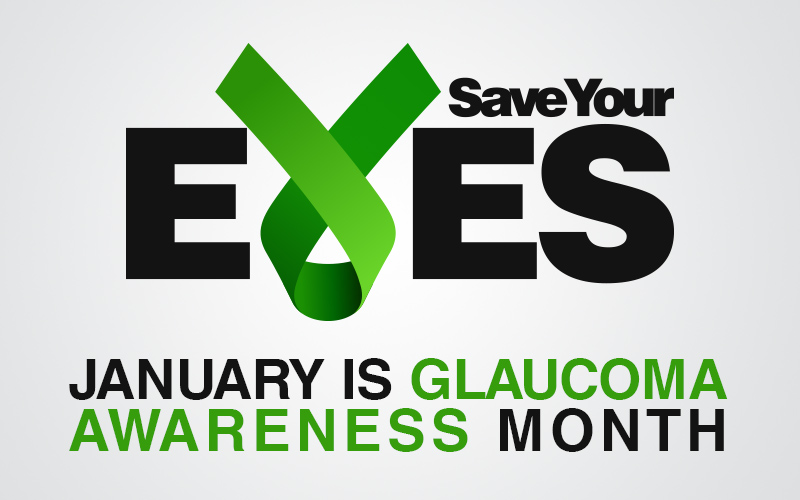Glaucoma Awareness Month: What can I expect in a glaucoma exam?

For part two of our glaucoma awareness series, we’ll discuss what a glaucoma examination looks like. If you haven't seen it already, take a look at part one.
Glaucoma is a disorder that affects the optic nerve. For the vast majority of cases, glaucoma occurs when the fluid pressure inside of the eye becomes too high. The result is slow, progressive damage to the optic nerve. Most people do not realize that the optic nerve is being damaged in the early stages of glaucoma. It doesn’t hurt. Vision doesn’t get foggy or blurry. In fact, I used the term silent theft of sight in the last post - glaucoma often happens without a patient’s knowledge. Glaucoma works from the outside-in with regards to vision loss. In the early stages, there is a very slight loss of vision - more a loss of sensitivity - that occurs mainly in a patient’s peripheral vision. Slowly glaucoma begins to affect central vision, and in some cases can lead to blindness.
What Can I Expect in a Glaucoma Exam?
Dilated Eye Exam
So what does an eye examination look like? Well, at least at the surface, not all that different from a typical dilated eye exam. Optometrists and ophthalmologist dilate a patient’s eyes to get a good, 3D view of all the structures inside of a patient’s eye. A comprehensive eye examination essentially screens for glaucoma and other eye disorders. When I’m looking inside and eye and evaluating and optic nerve, I’m assessing the symmetry between the right and left eye, the morphology of the optic nerve, and the overall health of the retina. If the optic nerve looks abnormal, I will order additional tests to evaluate optic nerve health and peripheral vision.
Tonometry
A critical component of an eye health evaluation is a measurement of eye pressure. You’ve probably experienced that wonder puff of air in your eye at your local eye doctor - that’s one method of evaluating eye pressure. Other methods of tonometry (measurement of eye pressure) include using a small probe to press on the eye.
Pachymetry
A pachymeter is a tool that measures the thickness of the cornea (the clear, front “window” of the eye). This is often done only once, as a patient’s corneal thickness typically does not vary. Corneal thickness helps an eye doctor estimate a patient’s risk for glaucoma. Thinner corneas have a higher risk for progressive glaucoma than thicker corneas. Average corneal thickness is around 550 microns. It’s best to think of corneal thickness as thin, thick, or average.
Gonioscopy
As I briefly mentioned in my last post, there’s actually a number of different types of glaucoma. The most common form of glaucoma is open-angle glaucoma. This “
Optic Nerve Imaging
The optic nerve may be imaged a few different ways. The simple way is to take a photo. As a clinician, I can then compare year-to-year if the optic nerve appears to change. The issue with photographs is that small changes can very easily be missed. To compensate for this, a newer technology called an optical coherence tomography (OCT) was developed to detect small (even microns!) of change to the optic nerve. Other instruments include scanning lasers, such as the HRT or GDX. Using an OCT, HRT, or GDX, your eye doctor can monitor very small changes to the optic nerve and retinal nerve fiber.
Visual Field (Perimetry)
Last, we need to map out a patient’s field of vision. Using what is called an automated perimeter (there are other forms of perimetry but automated perimetry is by far the most common), we can measure the patient’s sensitivity to stimuli (typically a spot of light) throughout the visual field.
Glaucoma testing then very much consists of monitoring for change. Does the optic nerve change? Does the visual field change? (Unfortunately, mapping out a patient’s visual field is often the most difficult portion of a glaucoma evaluation for patient and provider - I’ll discuss the visual field and VF testing in the third part of my glaucoma posting).
If a patient’s optic nerve appears to become progressively damaged or a patient’s visual field is constricting, treatment needs to be initiated.Just a quick aside - there’s a big difference between treating and curing - treatment means the disease persists but can be managed with intervention, curing means getting rid of the disease in its entirety. Unfortunately, glaucoma and glaucoma damage is permanent. The goal of treatment is to stop or slow progression.
Unfortunately, glaucoma and glaucoma damage is permanent. The goal of treatment is to stop or slow progression.
Treatment for glaucoma comes in three forms: medication (often eye drops although occasionally in pill form), laser surgery (not the kind that improves eyesight), or eye surgery (cutting and remodeling a portion of the eye). Often we progress in stages - start with drops, progress to laser treatment, and ultimately consider surgery if needed. Fortunately, with appropriate intervention, most patients will avoid significant vision loss throughout life.
This is part 2 of a 3 part series on glaucoma. Stay tuned for
